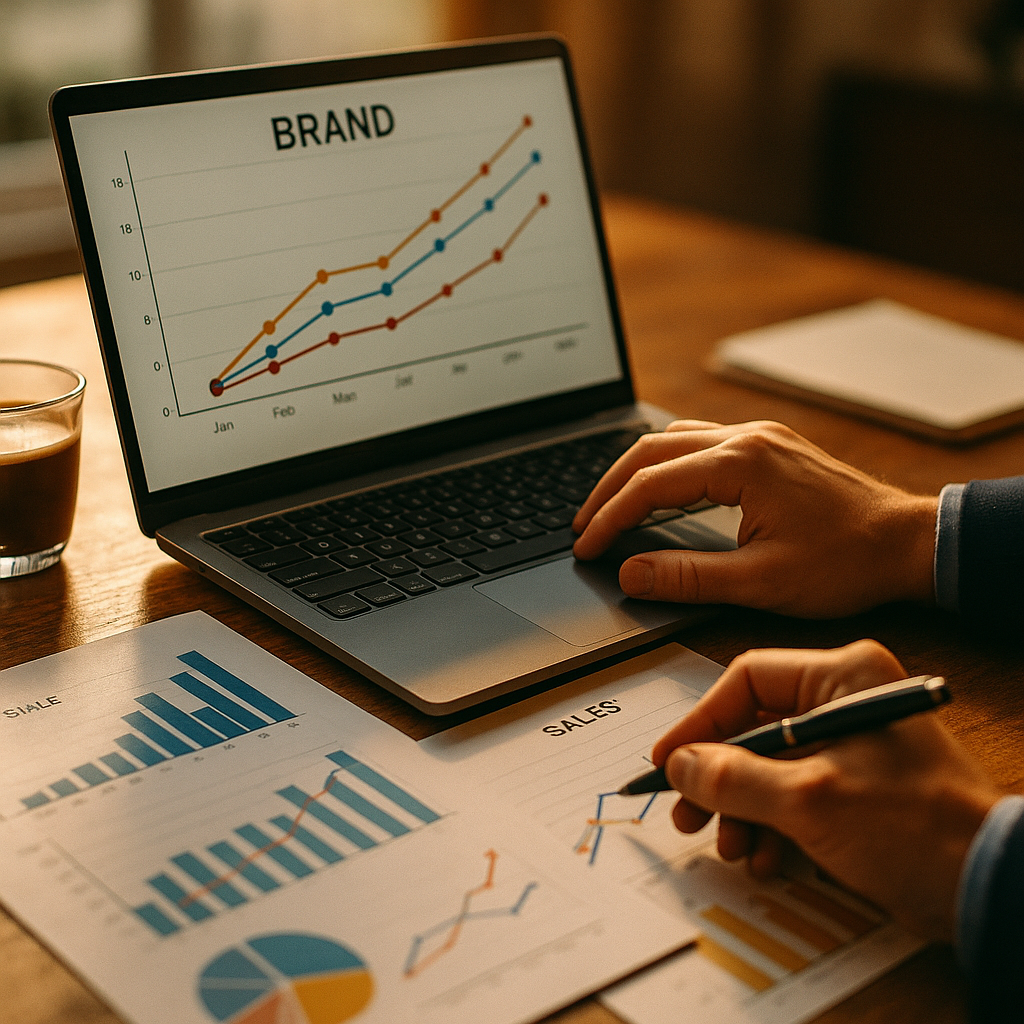A framework for measuring the impact of brand awareness on sales velocity is increasingly crucial for businesses seeking sustainable growth. Understanding this relationship helps organizations prioritize their marketing investments and maximize returns. In 2025, companies are demanding more rigorous methods to connect brand initiatives with tangible financial outcomes. So, how can you accurately gauge how brand awareness truly accelerates sales?
Defining Brand Awareness and Its Role in Sales Conversion
Brand awareness represents the degree to which consumers recognize and recall your brand under various conditions. In today’s noisy digital environment, a strong brand presence builds trust, encourages trial, and shortens decision cycles. When potential buyers instantly recognize your logo or message, they are more likely to convert compared to unknown competitors. According to a 2024 Nielsen study, 71% of consumers are more likely to purchase products from a brand they recognize, highlighting the vital link between awareness and sales conversion.
Developing a Reliable Measurement Framework
Implementing a framework for measuring the impact of brand awareness on sales velocity requires structured methodology and clear KPIs. Effective frameworks integrate both qualitative insights and quantitative data. The process often involves:
- Establishing Baseline Metrics: Use surveys, aided and unaided recall tests, and social listening to understand current brand awareness levels before any new marketing efforts.
- Tracking Sales Velocity: Measure the rate at which prospects move through the sales pipeline, tracking average deal closure time, win rates, and time-on-market for products.
- Correlating Awareness with Performance: Overlay brand metric changes with shifts in sales velocity, controlling for factors like promotions or seasonality.
- Ongoing Monitoring: Set periodic reviews—monthly or quarterly—to refine campaigns and assets based on fresh data.
This systematic approach provides clarity and minimizes noise that can otherwise distort performance insights.
Selecting the Right Data Sources and Brand Metrics
Choosing appropriate metrics is a cornerstone of any effective measurement framework. You should collect:
- Brand Recall and Recognition Scores: Captured periodically through unbiased third-party research panels or digital survey tools.
- Digital Engagement Signals: Social media mentions, branded search volume, website direct traffic, and share-of-voice in your segment.
- Sales Funnel Metrics: Average time from first interaction to purchase, repeat purchase rate, and lead-to-customer conversion rate.
- Attribution Analysis: Models that credit sales to touchpoints associated with brand campaigns, such as last-click, first-touch, and multi-touch attribution tools.
In combination, these data sources give a multidimensional view of brand awareness and its downstream effects, ensuring actionable insights rather than vanity results.
Utilizing Statistical Models to Link Brand Awareness with Sales Velocity
Quantifying the precise impact of brand awareness requires robust analytical techniques. Many marketers in 2025 rely on:
- Regression Analysis: Pinpoints the degree to which fluctuations in brand metrics statistically explain changes in sales velocity, controlling for confounding variables.
- Time-Series Analysis: Evaluates trends over weeks or months, revealing whether brand efforts produce immediate or lagged effects on sales cycles.
- Marketing Mix Modeling (MMM): Holistically assesses how various marketing activities, including branding, work together to drive sales outcomes.
Recent advances in AI-powered analytics further reduce bias and identify subtle patterns, offering even deeper insights for high-performing businesses.
Practical Steps to Drive Continuous Improvement
After implementing this framework, it’s essential to close the loop through actionable feedback cycles. Best practices include:
- AB Testing Unique Messaging: Test new taglines or visuals in controlled groups and monitor not just awareness uplift but subsequent sales velocity changes.
- Cross-Functional Collaboration: Marketing, sales, and analytics teams should share data openly, aligning campaigns directly with sales acceleration targets.
- Customer Feedback Loops: Use post-purchase surveys to assess the role of brand recognition in buying decisions, fine-tuning efforts for future campaigns.
This agile, learning-driven approach ensures your framework remains relevant as markets and consumer behaviors evolve.
Common Challenges and Solutions When Measuring Brand Impact
Despite advanced tools, several barriers persist:
- Attribution Complexity: In omnichannel environments, pinpointing which brand touchpoints influence purchase speed can be difficult. Employ advanced attribution models and always validate findings with control groups where possible.
- Data Siloes: Isolated data systems across departments can obscure relationships. Encourage cross-platform integrations and regular joint analysis sessions.
- External Variables: Economic shifts, industry trends, or competitive actions might influence both awareness and sales. Adjust analyses frequently and use contextual benchmarks for accuracy.
Addressing these issues early ensures your measurement framework yields actionable, trustable business intelligence.
FAQs
-
How often should I measure brand awareness and sales velocity?
Measure both metrics at least quarterly. For dynamic industries or new campaigns, consider monthly reviews to detect rapid changes and respond accordingly.
-
What’s the difference between sales velocity and sales volume?
Sales volume refers to total units sold, while sales velocity is the rate at which deals progress through the sales funnel. Improved brand awareness primarily accelerates velocity by reducing decision cycles.
-
Which metrics best indicate brand impact on sales?
Look for a positive correlation between increased brand recognition (survey scores, digital signals) and improvements in metrics like average deal closure time, conversion rate, and repeat purchases.
-
Can smaller companies benefit from this framework?
Absolutely. Scaled-down versions of this framework are valuable for small and midsize businesses, using affordable survey tools, website analytics, and simple attribution models to draw actionable conclusions.
-
How can I prove ROI to senior leadership?
Quantify the incremental sales acceleration delivered by brand-building activities, align these gains with revenue increases, and communicate results in straightforward dashboards easily understood by decision-makers.
Establishing a robust framework for measuring the impact of brand awareness on sales velocity empowers your team to link branding activities with real, measurable business value. Continuous improvement and smart analytics guarantee your marketing investments drive both visibility and growth in today’s competitive landscape.
